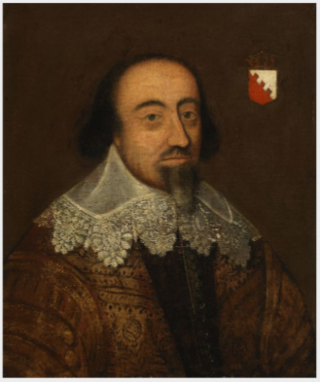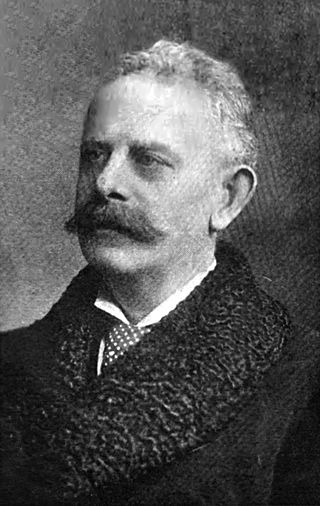
Richard Boyle, 1st Earl of Cork, also known as the Great Earl of Cork, was an English politician who served as Lord Treasurer of the Kingdom of Ireland.

Marquess of Downshire is a title in the Peerage of Ireland. It was created in 1789 for Wills Hill, 1st Earl of Hillsborough, a former Secretary of State.

Earl of Kingston is a title in the Peerage of Ireland. It was created in 1768 for Edward King, 1st Viscount Kingston. The Earl holds the subsidiary titles Baron Kingston, of Rockingham in the County of Roscommon, Viscount Kingston, of Kingsborough in the County of Sligo, Baron Erris, of Boyle in the County of Roscommon, and Viscount Lorton, of Boyle in the County of Roscommon, also in the Peerage of Ireland. He is also a baronet in the Baronetage of Ireland. Between 1821 and 1869 the earls also held the title Baron Kingston, of Mitchelstown in the County of Cork, in the Peerage of the United Kingdom.

Earl of Shannon is a title in the Peerage of Ireland. It was created in 1756 for the prominent Irish politician Henry Boyle, who served as Speaker of the Irish House of Commons and as Chancellor of the Irish Exchequer. The earldom is named after Shannon Park in County Cork.

Earl Landaff, of Thomastown in the County of Tipperary, was a title in the Peerage of Ireland. It was created in 1797 for Francis Mathew, 1st Viscount Landaff, who had previously represented County Tipperary in the Irish House of Commons. He had already been created Baron Landaff, of Thomastown in the County of Tipperary, in 1783, and Viscount Landaff, of Thomastown in the County of Tipperary, in 1793, also in the Peerage of Ireland. In 1800 he was elected as one of the 28 original Irish representative peer. He was succeeded by his son, the second Earl. The titles became extinct on his death in 1833. Thomastown Castle was the childhood home of Father Theobald Mathew, "The Apostle of Temperance".

Earl of Clanricarde is a title that has been created twice in the Peerage of Ireland, first in 1543 and again in 1800. The former creation became extinct in 1916 while the 1800 creation is extant and held by the Marquess of Sligo since 1916.
Viscount O'Neill, of Shane's Castle in the County of Antrim, was a title in the Peerage of Ireland. It was created in 1795 for John O'Neill, 1st Baron O'Neill, who had earlier represented Randalstown and County Antrim in the Irish House of Commons. He had already been created Baron O'Neill, of Shane's Castle in the County of Antrim, in 1793, also in the Peerage of Ireland. He died in 1798 and was succeeded by his son, the second Viscount. In 1800 he was created Viscount Raymond and Earl O'Neill in the Peerage of Ireland. The same year he was elected as one of the original 28 Irish representative peer. The viscountcy of Raymond and earldom became extinct on his death in 1841. The barony and viscountcy of O'Neill were passed on to his only brother, the third Viscount. These titles became extinct on the latter's death in 1855. The late Viscount's estates were inherited by his cousin, the Reverend William Chichester, who assumed the surname of O'Neill in lieu of Chichester the same year. In 1868, the O'Neill title was revived when he was created Baron O'Neill. This title is still extant.
Earl of Wicklow was a title in the Peerage of Ireland. It was created in 1793 for Alice Howard, Dowager Viscountess Wicklow. Born Alice Forward, she was the daughter of William Forward, Member of the Irish House of Commons for the County Donegal, and the widow of Ralph Howard, 1st Viscount Wicklow. The latter was the son of the Right Reverend Robert Howard, Lord Bishop of Elphin, and represented the County Wicklow in the Irish Parliament. In 1776 he was raised to the Peerage of Ireland as Baron Clonmore, of Clonmore in the County of Carlow, and in 1785 he was further honoured when he was made Viscount Wicklow, also in the Peerage of Ireland. Both Lord and Lady Wicklow were succeeded by their eldest son, the second Earl. He sat in the House of Lords as one of the twenty-eight original Irish representative peer from 1800 to 1815. He never married and was succeeded by his younger brother, the third Earl. In 1780 he had assumed by Royal licence his maternal grandfather's surname of Forward. After succeeding in the earldom in 1815 he resumed the same year by Royal licence the surname of Howard after that of Forward.

James Francis Bernard, 4th Earl of Bandon, KP, was a British Deputy Lieutenant in Ireland and Irish representative peer. Bernard was a cousin of the Earl of Midleton, who was head of the southern Irish Unionist Alliance at the time of the Anglo-Irish War, 1919–21.

Colonel William Montagu, 5th Duke of Manchester, styled Viscount Mandeville until 1788, was a British peer, soldier, colonial administrator and politician. He was Governor of Jamaica from 1808 to 1827, and Manchester Parish was named after him.

Air Chief Marshal Percy Ronald Gardner Bernard, 5th Earl of Bandon, was an Anglo-Irish aristocrat who served as a senior commander in the Royal Air Force in the mid-20th century. He was a squadron, station and group commander during the Second World War, and the fifth Commandant of the Royal Observer Corps after the war. He was awarded the American Distinguished Flying Cross and Bronze Star Medal in 1946.
John Browne, 1st Baron Kilmaine, known as Sir John Browne, 7th Baronet, from 1765 to 1789, was an Irish politician.

Henry Boyle, 3rd Earl of Shannon, KP, PC (Ire), styled Viscount Boyle from 1764 until 1807, was an Anglo-Irish politician and peer who was one of the last surviving members of the Parliament of Ireland. He represented County Cork in the Parliament of the United Kingdom from 1801 to 1807. He then briefly served as Member of Parliament for Bandon in 1807, succeeding as Earl of Shannon later in the same year. He served as Custos rotulorum for County Cork from 1807 to his death. He was the first Lord Lieutenant of Cork from 1831 to his death.

Thomas Taylour, 1st Marquess of Headfort, styled Viscount Headford from 1766 to 1795, and known as The Earl of Bective from 1795 to 1800, was an Irish peer and politician.
Francis Bernard, 1st Earl of Bandon was an Irish peer and politician.
James Bernard was an Irish politician and ancestor of the Earls of Bandon.
Francis Bernard SL was an Irish lawyer, politician and judge.
Francis Bernard, 3rd Earl of Bandon, styled Viscount Bernard between 1830 and 1856, was an Irish peer and politician.
Henry Petty, 1st Earl of Shelburne PC (I) was an Anglo-Irish peer and politician who sat in the House of Commons from 1715 to 1727.
Hayes St Leger, 3rd Viscount Doneraile was an Anglo-Irish peer.











